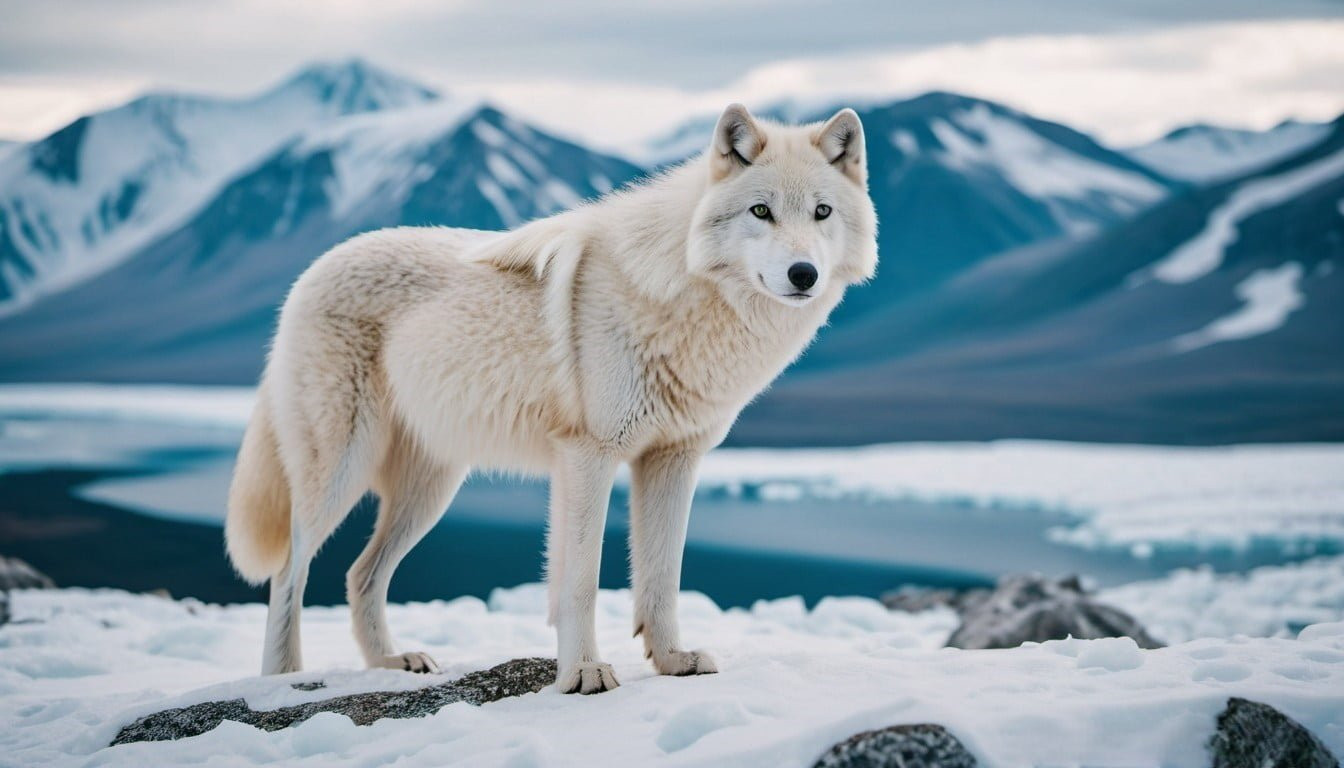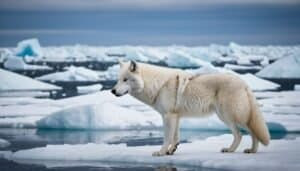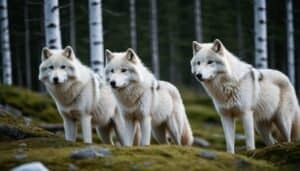Introduction
Arctic wolves, majestic inhabitants of the polar regions, face various threats that endanger their existence. This article explores the international treaties and national laws that protect them, the challenges they face, and the efforts made by organizations and individuals to ensure their survival
We will delve into the effectiveness of these conservation measures, the impact of climate change, and the success stories that highlight the positive outcomes of dedicated conservation efforts
International Treaties and Conservation Efforts
Arctic wolves are protected by various international treaties and national laws aimed at conserving their populations and habitats. Understanding these protections is crucial to appreciating the efforts made to preserve these magnificent animals
Overview of International Treaties
International treaties play a vital role in the conservation of Arctic wolves by establishing guidelines and regulations that countries must follow. These agreements facilitate cooperation among nations to protect wildlife and their habitats
One of the most significant treaties is the Convention on International Trade in Endangered Species of Wild Fauna and Flora (CITES), which aims to ensure that international trade in specimens of wild animals and plants does not threaten their survival
CITES and Arctic Wolves
CITES is a pivotal treaty that regulates the trade of endangered species, including the Arctic wolf. While Arctic wolves are not typically subject to extensive international trade, CITES helps monitor and control any potential trade activities that could harm their populations
By listing Arctic wolves under Appendix II, CITES ensures that any trade in these animals is sustainable and does not jeopardize their survival in the wild
IUCN Red List Status
The International Union for Conservation of Nature (IUCN) Red List is another critical tool in wildlife conservation. It assesses the conservation status of species worldwide and categorizes them based on their risk of extinction
Arctic wolves are currently listed as “Least Concern” on the IUCN Red List, indicating that they are not immediately at risk. However, this status does not imply that they are free from threats. Continuous monitoring and conservation efforts are necessary to maintain their populations and address emerging threats
National Laws and Policies
National laws and policies are essential components of Arctic wolf conservation. Countries within the Arctic wolf’s range, such as Canada, have implemented various regulations to protect these animals and their habitats
These laws often include restrictions on hunting, habitat protection measures, and initiatives to mitigate human-wildlife conflicts
Protection in Canada
Canada, home to a significant population of Arctic wolves, has established numerous protections under its national wildlife laws. The Canadian Wildlife Act and the Species at Risk Act are pivotal in safeguarding Arctic wolves
These laws prohibit the hunting and capturing of Arctic wolves and provide frameworks for habitat conservation and restoration efforts. Additionally, Canadian provinces and territories have their own regulations to enhance protection measures
Protection in Other Countries
Other countries within the Arctic wolf’s range, such as Greenland and parts of the United States, also implement national laws to protect these wolves
These laws often align with international treaties like CITES and aim to preserve the unique Arctic ecosystems that these wolves inhabit. Collaborative efforts between these countries are crucial for the comprehensive protection of Arctic wolves across their range
These measures help monitor and regulate activities that could threaten their survival, ensuring that Arctic wolves continue to thrive in their natural habitats
Threats and Challenges to Arctic Wolves
Arctic wolves face various threats and challenges that impact their survival. Understanding these threats is essential to implementing effective conservation strategies
Natural Threats
Natural threats to Arctic wolves include predation, disease, and competition for resources. Although Arctic wolves are apex predators, they can fall prey to larger animals such as polar bears
Diseases such as rabies and canine distemper can also pose significant risks, particularly in isolated populations where an outbreak can have devastating effects
Additionally, competition with other predators, such as grizzly bears and humans, for food resources can limit their access to prey, especially during harsh winter months
Human-Induced Threats
Human activities present some of the most significant threats to Arctic wolves. These include habitat destruction, hunting, and climate change. Habitat destruction occurs through industrial development, such as oil and gas exploration, which fragments the wolves’ natural habitats and disrupts their hunting grounds
Illegal hunting and poaching, though less common, also pose direct threats to their populations. Furthermore, climate change impacts Arctic wolves by altering their environment, affecting prey availability, and causing habitat loss due to melting ice and changing vegetation patterns
Climate Change and Arctic Wolves
Climate change has profound effects on the Arctic ecosystem, directly impacting Arctic wolves and their prey
Impact of Climate Change
The warming Arctic environment leads to the melting of ice and permafrost, significantly altering the landscape
This change affects the availability of prey species, such as caribou and muskoxen, which are critical to the Arctic wolf’s diet. Additionally, changing weather patterns can result in more frequent and severe storms, further stressing the wolves and their ability to find food
Mitigation Strategies
To mitigate the impacts of climate change, conservation efforts focus on protecting and restoring habitats, as well as implementing measures to reduce greenhouse gas emissions. Efforts to create protected areas and wildlife corridors help ensure that Arctic wolves have access to the necessary habitats and prey
Furthermore, international cooperation on climate policies and conservation strategies is crucial to addressing the broad and interconnected challenges posed by climate change
Conservation Success and Areas for Improvement
Conservation efforts for Arctic wolves have seen various successes, yet there are still areas requiring significant improvement. By analyzing both the triumphs and shortcomings, we can enhance future conservation strategies
Success Stories
There have been several notable successes in the conservation of Arctic wolves, often attributed to the collaborative efforts of governments, NGOs, and local communities
One of the major successes is the establishment of protected areas. In regions like Canada, large tracts of land have been designated as wildlife reserves, providing safe habitats where Arctic wolves can thrive without the pressures of industrial development and hunting. These protected areas not only safeguard the wolves but also protect a myriad of other species that share their ecosystem
Community involvement in conservation has also yielded positive results. Indigenous and local communities have long-standing knowledge and practices that contribute to the sustainable management of wildlife populations
Programs that engage these communities in conservation efforts have led to increased awareness and active participation in protecting Arctic wolves and their habitats
Another success is the reduction of illegal hunting through stricter enforcement of wildlife laws. Increased patrolling and the use of technology, such as satellite tracking and drones, have helped monitor wolf populations and deter poaching activities
Areas Needing Improvement
Despite these successes, there are still areas where conservation efforts for Arctic wolves need improvement
One significant area is the need for more comprehensive research. While some data on Arctic wolves exist, there are still gaps in understanding their behavior, population dynamics, and ecological roles. More robust scientific research is needed to inform conservation strategies and ensure they are based on the best available evidence
Another area requiring attention is the mitigation of climate change impacts. While protected areas provide some refuge, climate change continues to alter the Arctic environment, affecting prey availability and habitat conditions
More aggressive actions to combat climate change at the global level are essential to preserving the Arctic ecosystem and the species that depend on it, including Arctic wolves
Additionally, there is a need for better integration of conservation policies across borders. Arctic wolves roam vast territories that often cross national boundaries. Coordinated international efforts and policies are necessary to provide consistent protection throughout their range. This includes harmonizing hunting regulations, habitat conservation measures, and addressing transboundary threats such as pollution and climate change
Funding is another critical area where improvements are needed. Conservation programs often suffer from insufficient funding, which limits their ability to implement effective strategies and conduct necessary research
Increased financial support from governments, international organizations, and private donors is crucial to sustain and expand conservation efforts
Role of Organizations and Individuals in Conservation
Effective conservation of Arctic wolves involves the concerted efforts of various organizations and individuals. Their roles are diverse, ranging from policy advocacy to on-the-ground conservation work
Key Conservation Organizations
Several key organizations play pivotal roles in Arctic wolf conservation. These include international bodies, national wildlife agencies, and non-governmental organizations (NGOs)
The World Wildlife Fund (WWF) is one such organization that works to protect Arctic habitats and species, including Arctic wolves. WWF’s initiatives include habitat preservation, research funding, and advocacy for stronger environmental policies
Another significant player is the International Union for Conservation of Nature (IUCN). Through its Red List and various conservation programs, the IUCN provides critical data and supports initiatives aimed at preserving Arctic wolf populations
Local organizations, such as the Arctic Wildlife Conservation Society, also play crucial roles by conducting field research, raising awareness, and engaging local communities in conservation efforts
Collaboration and Efforts
Collaboration among these organizations is essential for effective conservation. Joint initiatives, information sharing, and coordinated actions enhance the impact of conservation strategies. For example, transboundary conservation projects can help protect the migratory routes of Arctic wolves, ensuring they have safe passage across international borders
Public-private partnerships also contribute significantly to conservation efforts. Companies involved in industries such as oil and gas can collaborate with conservation organizations to minimize their environmental impact and support habitat restoration projects
Supporting Conservation Efforts
Individuals can support Arctic wolf conservation in numerous ways. Financial contributions to conservation organizations are one of the most direct methods. Donations fund essential research, habitat protection, and advocacy work
Volunteering is another impactful way to contribute. Many conservation organizations offer volunteer programs where individuals can participate in fieldwork, data collection, and community outreach
Additionally, individuals can support conservation efforts by making sustainable lifestyle choices. Reducing carbon footprints, supporting eco-friendly products, and advocating for strong environmental policies all contribute to broader conservation goals
Raising Awareness
Raising awareness about the plight of Arctic wolves is crucial for garnering public support and driving policy changes. Educational programs, social media campaigns, and public events help inform and engage a wider audience
Individuals can participate in raising awareness by sharing information on social media, participating in local conservation events, and advocating for wildlife protection within their communities
Conclusion
Arctic wolves, resilient and majestic creatures of the polar regions, are safeguarded by a combination of international treaties, national laws, and dedicated conservation efforts
International agreements like CITES and assessments by the IUCN Red List provide a foundational framework for monitoring and protecting these wolves. National laws, particularly in countries like Canada, further enhance these protections through stringent regulations and habitat conservation measures
Despite these protections, Arctic wolves face numerous threats, both natural and human-induced. Natural predators, diseases, and competition for resources pose ongoing challenges
However, the most pressing threats arise from human activities, including habitat destruction, illegal hunting, and the far-reaching impacts of climate change. These challenges necessitate a multifaceted approach to conservation that includes research, habitat protection, and climate change mitigation
Conservation efforts have seen several successes, such as the establishment of protected areas, community involvement, and the reduction of illegal hunting. Yet, areas needing improvement remain, particularly in conducting comprehensive research, mitigating climate change, harmonizing international policies, and securing adequate funding for conservation programs
The role of organizations and individuals is pivotal in Arctic wolf conservation. Key organizations like WWF and IUCN, alongside local conservation groups, drive initiatives and foster collaboration. Individuals contribute through financial support, volunteering, sustainable lifestyle choices, and raising awareness
The conservation of Arctic wolves is a complex and ongoing endeavor that requires sustained effort, collaboration, and commitment. By addressing current challenges and building on existing successes, we can ensure that Arctic wolves continue to thrive in their natural habitats for generations to come










